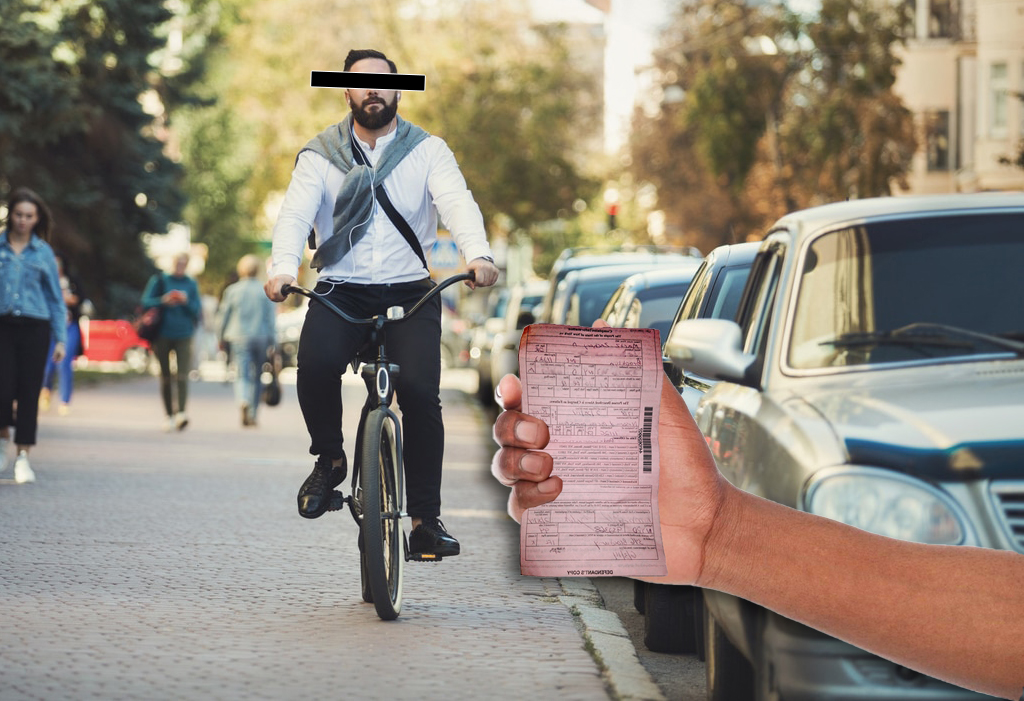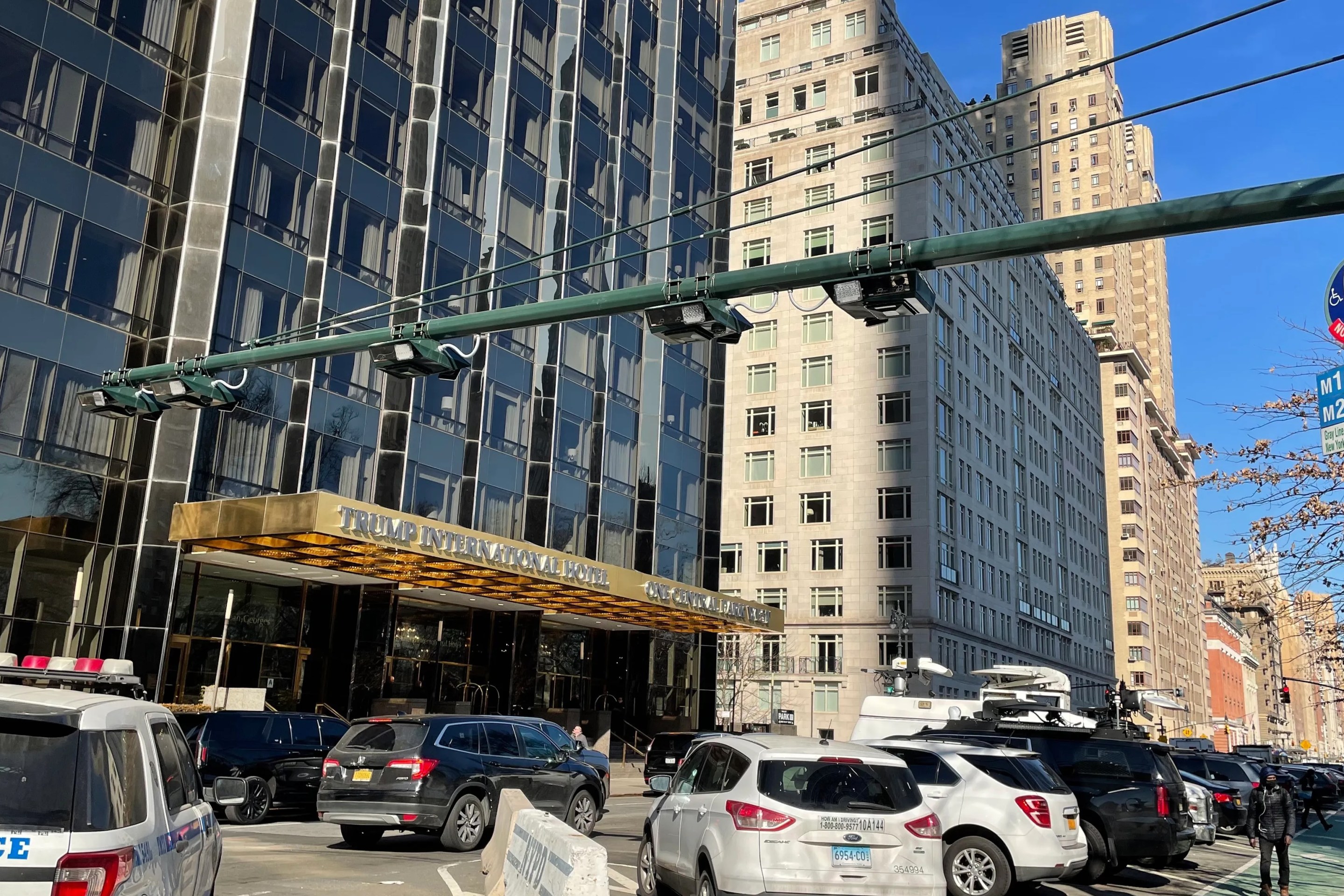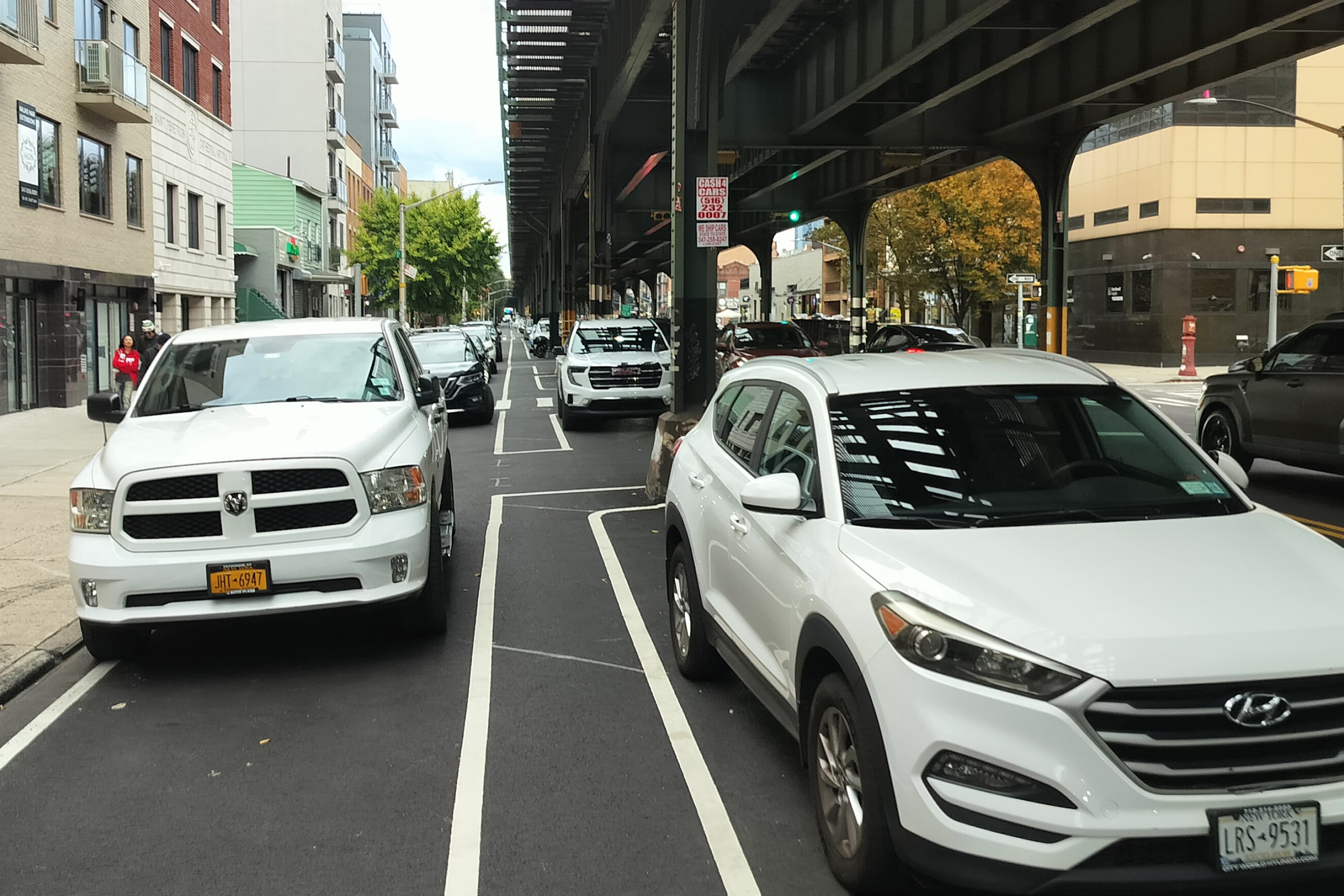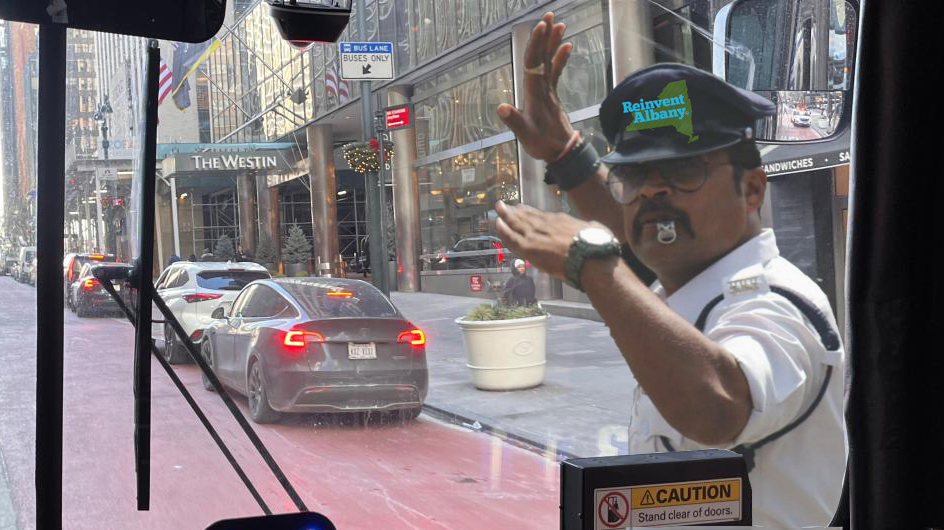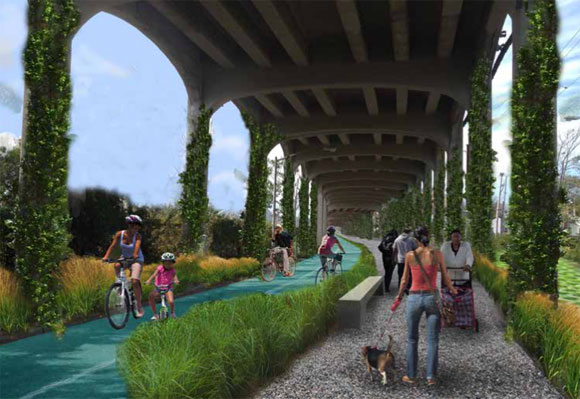
There are nearly 700 miles of elevated highways, rail lines, and bridges crisscrossing New York City. They tend to be dreary places, but they don't have to be. A report released today by the Design Trust for Public Space and DOT, Under the Elevated, envisions new uses for the spaces beneath these elevated structures.
Already, land beneath elevated structures in Harlem, Dumbo, Long Island City, Sunnyside, New Lots, and the Rockaways is being repurposed. To keep a good thing going, the report provides a toolkit the city can use to reinvigorate more of these spaces.
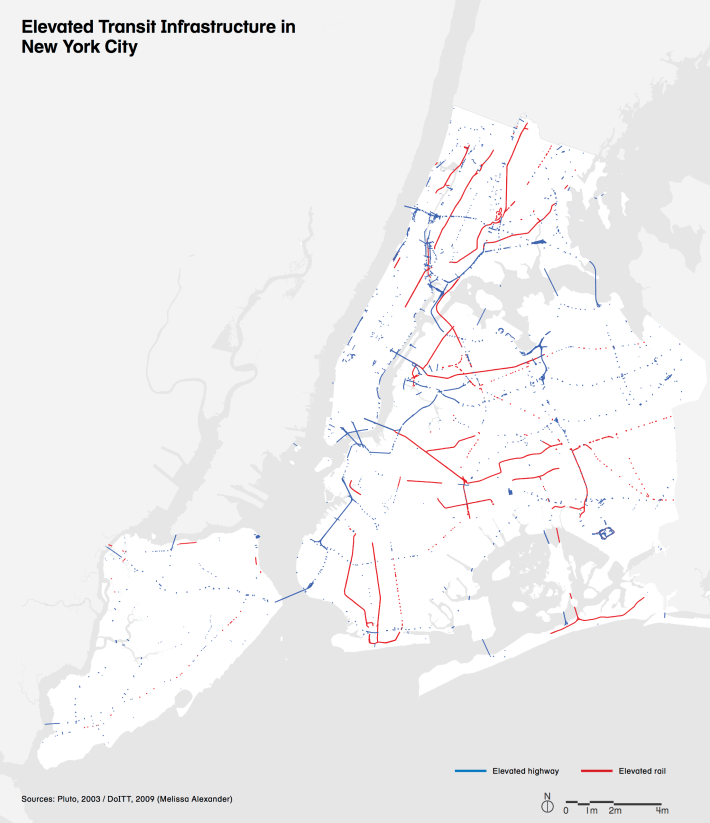
There are approximately 7,000 miles of elevated structures in cities across the nation, mostly highways, according to dlandstudio principal Susannah C. Drake, who served as a fellow with the Design Trust. DOT and Design Trust staff said they aren't aware of another city that had taken such a comprehensive look at the spaces beneath elevated structures.
"You can reclaim that space. You can do some beautiful things with it," DOT Commissioner Polly Trottenberg said at an event this afternoon announcing the report. "We're really going to put some resources into improving these spaces."
The possibilities include building greenways, adding retail, livening up spaces with events, and implementing permeable surfaces to absorb stormwater.
One of the report's major recommendations is the "El-Space Program," a DOT initiative that will focus specifically on under-the-elevated projects. DOT's four-person urban design staff, led by Neil Gagliardi, will take the lead. "This is really a comprehensive approach, so we don't have to reinvent the wheel every time," Gagliardi said.
DOT and the Design Trust have had a hand in two "pop-up" projects to test these concepts. On Division Street beneath the Manhattan Bridge in Chinatown, DOT installed benches along with movable tables and chairs, based on feedback from passersby. In the Bronx, the Design Trust and the Women’s Housing and Economic Development Corporation created the Boogie Down Booth, a music installation on a newly-installed curb extension beneath the elevated train along Southern Boulevard. A second Boogie Down Booth will be added this summer.
"The initial experiments we've done in the Bronx and in Chinatown have started to give us a toolkit of treatments we can do in these public spaces," Trottenberg said. "We're going to start with lighting, which is one of the number one things we hear all around the city."
One of the first projects on the list: Livonia Avenue in Brownsville, where NYCHA residents and local elected officials brought poor lighting beneath the 3 train to the city's attention. The Department of Housing Preservation and Development is also planning to build affordable housing next to the train, in a neighborhood that's become one of the mayor's focus areas. DOT has hired Tillett Lighting Design to come up with illumination plans for the street.
Another area in line for public space upgrades: Jerome Avenue, where the Department of City Planning is working on a rezoning along the elevated 4 train.
"We'll be initiating pilot projects in coming months," said Design Trust for Public Space Executive Director Susan Chin. "'Under the Elevated' paves the way for systemic change around our vast transportation infrastructure."
